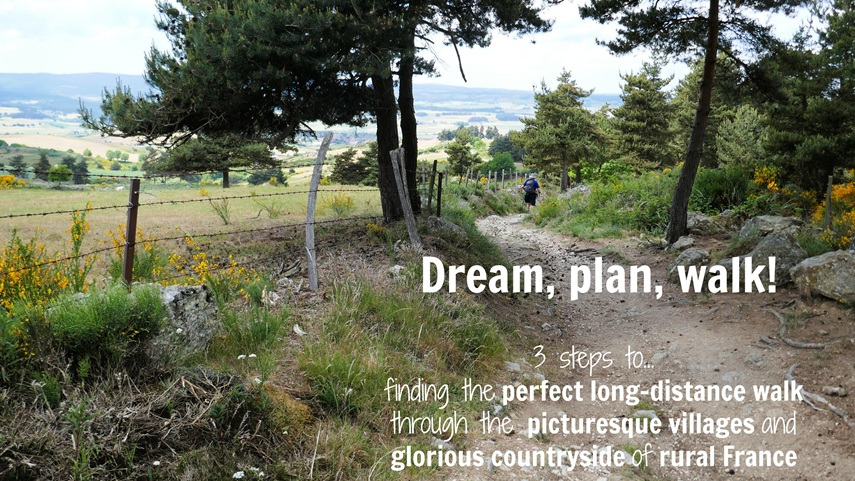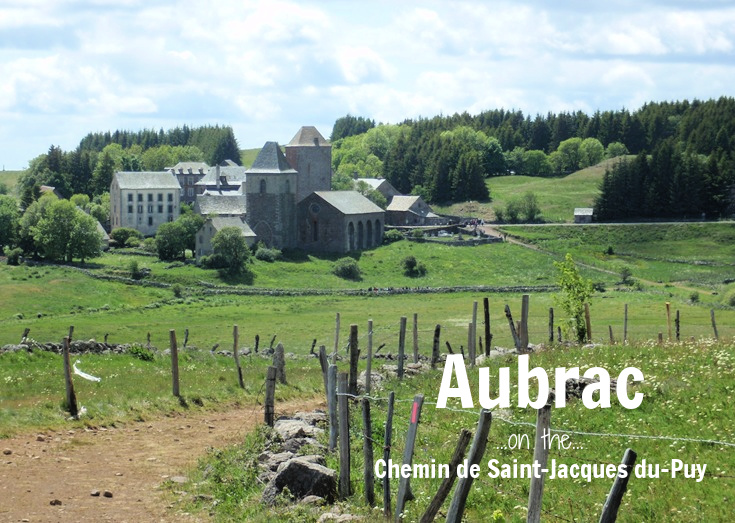
(Published August 2013, last updated March 2025)
The view of the church tower surrounded by ancient stone houses in the tiny village of Aubrac never fails to set my heart aflutter! It’s the same view that has greeted pilgrims and long-distance walkers for the last 900 years.
And although the village is tiny and can be thoroughly explored in an hour or two, the sense that time here froze several centuries ago make it one of my favourite places along the Chemin de Saint-Jacques.
But there is more to Aubrac than historic charm—you’ll also find good food and a choice of places to stop for the night.
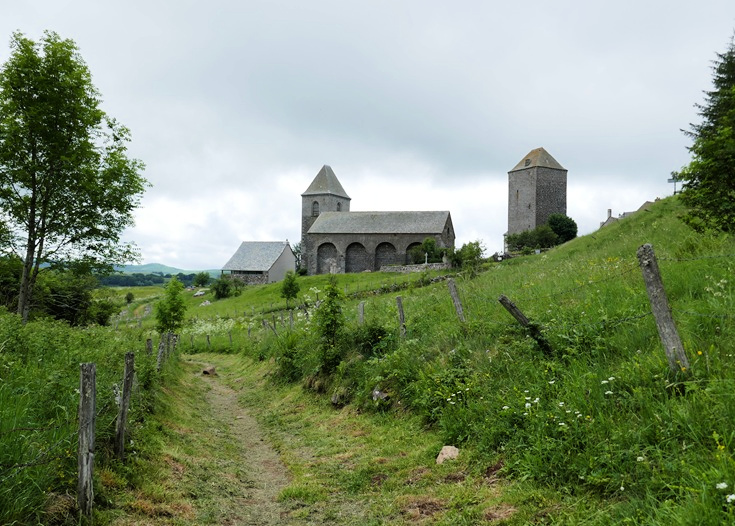
Approaching the village of Aubrac along the GR 65
The story of the pilgrim Adalard
In 1120, the pilgrim Adalard was crossing the vast Aubrac plains as he made his way to Santiago from Le Puy-en-Velay. As he passed through the forest, near where the village of Aubrac now stands, he was attacked by bandits, but survived, unharmed, and vowed to return and build a monastery where future pilgrims could find shelter.
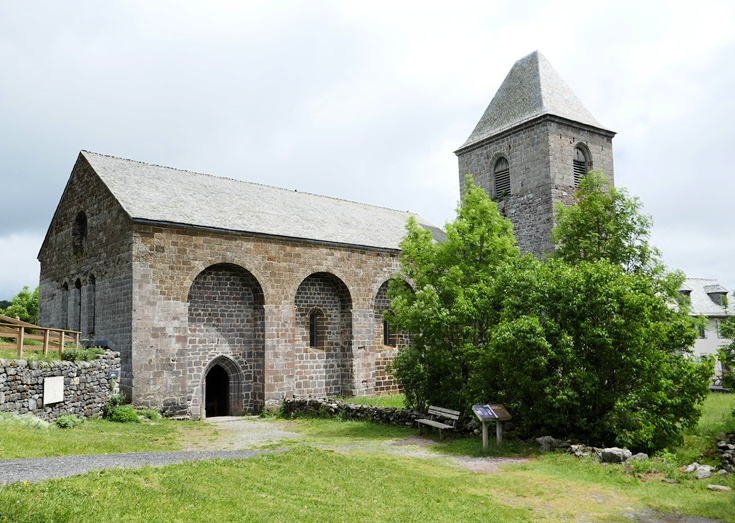
Twelfth-century church dedicated to Notre-Dame des Pauvres (our Lady of the Poor)
A few years later Adalard returned and between 1120 and 1122 he built the monastery, the church and a hospital where sick pilgrims could be treated. During its busiest times, the monastery dispensed 5,000 bread rolls and sheltered 500 pilgrims each day!

Murals on the walls of Notre-Dame des Pauvres (by Hervé Vernhes) depict the life of the pilgrim Adalard
The monastery was destroyed during the French Revolution but the church, Notre-Dame des Pauvres, has survived. The interior features contemporary murals, by local artist Hervé Vernhes, depicting the life of Adalard.
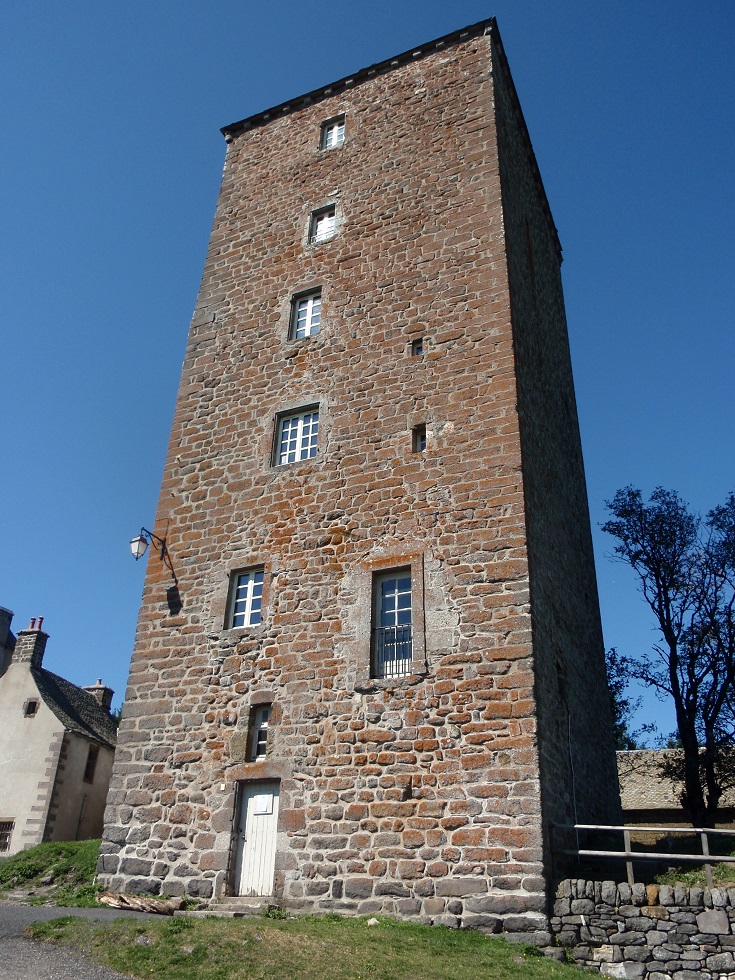
La Tour des Anglais
La Tour des Anglais
Next to the church is la Tour des Anglais, built as a fortification during the Hundred Years War with the English in the fourteenth century. It is now a gîte and still shelters pilgrims each night. It is named, not after the English, but after the vagabonds who roamed the country after the Hundred Years War and were referred to, derogatorily, as les anglais.
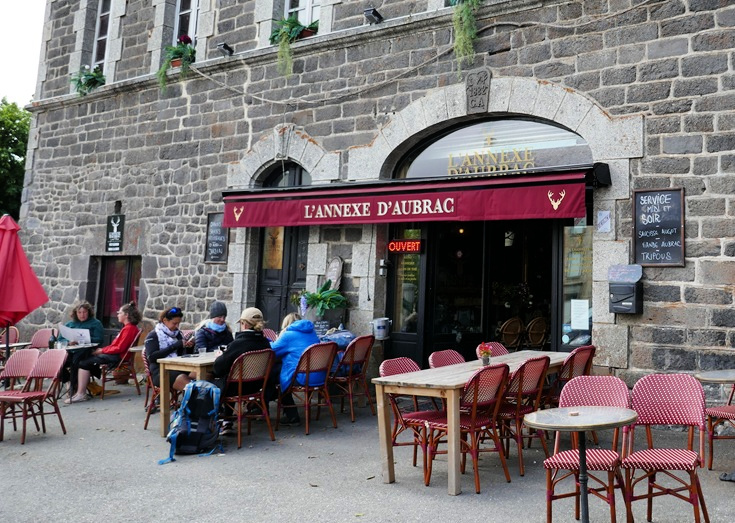
Diners enjoy lunch at L’Annexe on Place de la Fontaine
Summer Transhumance from Aubrac to Saint-Côme-d’Olt
Transhumance—the annual migration of cattle to summer pastures—begins here in the village of Aubrac on the Sunday closest to 25 May. Festivities begin on the Thursday before (22 May in 2025) with an evening of traditional dancing and the opportunity to enjoy the local produce.
Over the next two days, an open-air market, a photographic exposition and a busy program of guided walks and traditional games and activities entertains young and old.
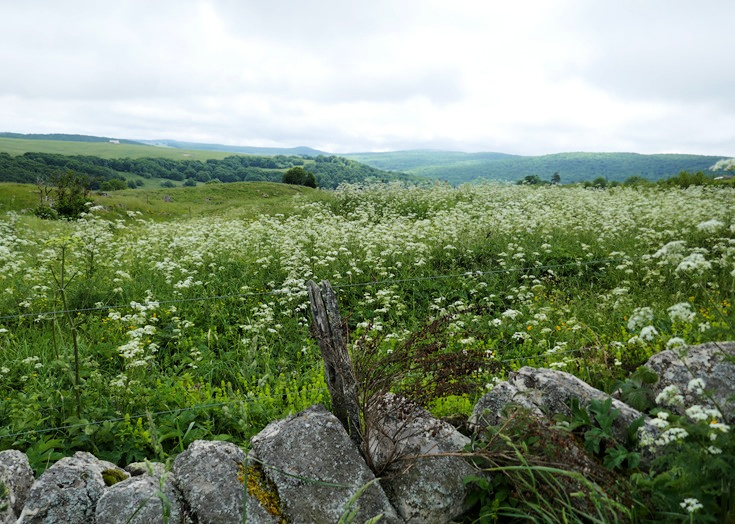
Views from the terrace of chambre d’hôte l’Estive out to the Aubrac Plains
On Sunday, herds of cattle adorned with colourful flowers and flags parade through Place de la Fontaine before setting out for higher ground in the Aubrac Plains. The departure of each of the participating farms is staggered throughout the day, and roughly ninety minutes later, the arrival of each herd is celebrated in nearby Fontanilles.
The Transhumance is a major event on the Aubrac calendar and accommodation is often booked up to a year in advance. If your visit coincides with the festivities, I recommend booking well ahead.
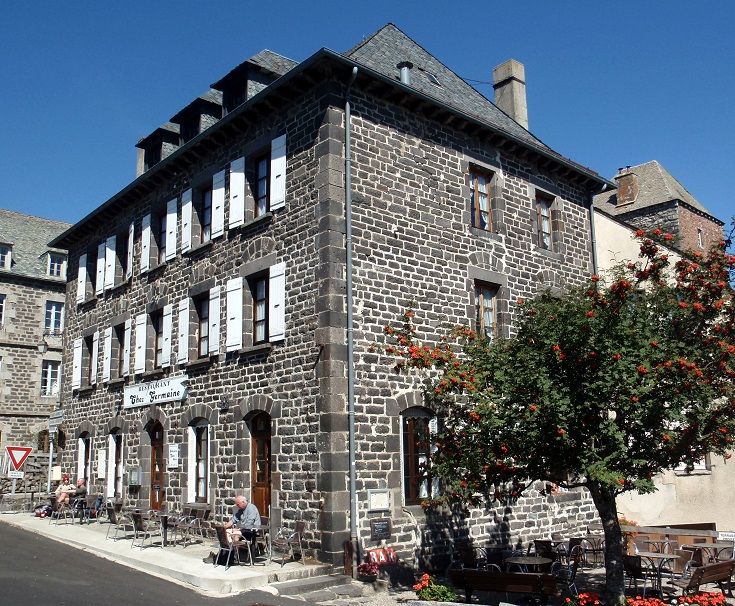
Café Chez Germaine where you’ll choose from a wide range of hearty soups and home-made tarts
FAST FACTS
Which long-distance walk in France visits Aubrac?
Chemin de Saint-Jacques du-Puy (Stage 2: Aumont-Aubrac to Figeac)
Look inside the CHEMIN DE SAINT-JACQUES (PDF) guidebook
Where is Aubrac, France? Find it on Google maps
Aubrac is located 124 kilometres (77.5 miles) along the Chemin de Saint-Jacques – a relaxed 8-day walk from the starting point of Le Puy-en-Velay but if you are pressed for time, Aubrac can be reached quite comfortably in time for lunch on the sixth day without sacrificing any of the highlights.
Click through to find my suggested itinerary for all five stages of the walk or click through onto each of the five stages to find faster itineraries.
If you prefer to set your own agenda, I share the steps I take to plan my itinerary on any long-distance walk (using the Chemin de Stevenson as a case study).
Transport options to and from Aubrac
The Compostel’Bus service runs every morning, connecting Aubrac with villages along the path between Le Puy-en-Velay and Conques and making the return journey each afternoon. Other stops include Montbonnet, Saint-Privat-d’Allier, Monistrol-d’Allier, Saugues, Villeret-d’Apchier, La Chapelle-Saint-Roch (3 kms beyond le Sauvage), Saint-Alban-sur-Limagnole, Aumont-Aubrac, Nasbinals, Saint-Chély-d’Aubrac, Saint-Côme-d’Olt, Espalion, Estaing, Golinhac, Espeyrac and Sénergues.
Tourist Office in Aubrac
You’ll find the Tourist Office in Maison de l’Aubrac near the Botanic Garden. Opening hours are listed on the Tourist Office website.
You’ll find a full program of Transhumance activities on the Transhumance Aubrac website.
Accommodation in Aubrac
Hotel
La Dômerie
Chambres d’Hôtes
La Colonie
L’Estive d’Aubrac (2 rooms, 4 people)
Gîtes
La Tour des Anglais (16 people)
How to book accommodation in French
Where to eat in Aubrac
Aubrac is thought to be the birthplace of aligot, a traditional dish made of potatoes and cheese – the ultimate comfort food. It features in restaurants all through this region so be sure to try it while you are here.
There are several cafés and restaurants in Aubrac, including the Tourist Office where you can pick up regional produce for a delicious picnic lunch. If you’ve worked up a hearty pilgrim’s appetite, I thoroughly recommend Chez Germaine where you’ll find the best onion soup and a mouth-watering selection of berry tarts included on the menu.
Practical tips for long-distance walking—preparation, packing and avoiding blisters
Purchase the Chemin de Saint-Jacques (PDF) guidebooks
Purchase five guidebooks covering Le Puy-en-Velay to Saint-Jean-Pied-de-Port
